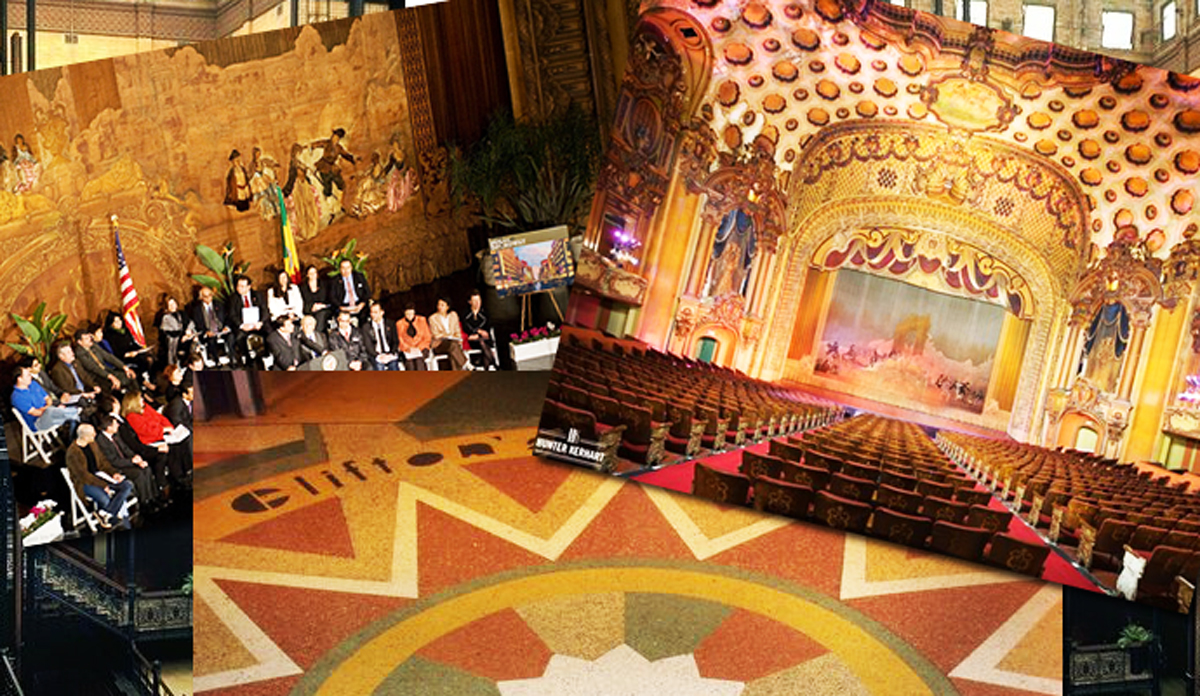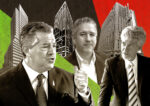Trending
Why Downtown Broadway’s big comeback is still a work in progress
'Bringing Back Broadway,' a 10-year-old economic revitalization effort, grapples with huge commercial vacancies

In 2008, Los Angeles kicked off an ambitious, decade-long strategic economic development campaign to boost the historic but faded Broadway corridor and revitalize its real estate stock.
In the following years, “Bringing Back Broadway” — as the initiative is called — has provided incentives for property acquisitions and investments, and paved the way for an infusion of creative office tenants, advocates say. It has also led to improved signage and street lighting, and raised the profile of a moribund stretch that is home to century-old theaters and buildings.
But while commercial property values have slowly increased, the neighborhood remains very much a work in progress, brokers, developers and local property owners say. Some of the outmoded and neglected buildings are now being repurposed but others — which have landmark status or are unsuitable for today’s office and retail tenants — require extensive and expensive changes.
Most glaring, more than 1 million square feet of vacant upper-floor commercial space remains along the Broadway corridor, from 1st to 12th streets, according to Bringing Back Broadway’s website. Meanwhile, ground-floor retail vacancy rates hover at around 15 to 20 percent, nearly four times the average of Greater L.A., according to a recent report from CBRE. A residential component that was also considered crucial to the revitalization effort, also has yet to blossom there.
Ten years later, Broadway has a long way to go before it is back.
“Most new people question the quality of the [Broadway] area by virtue of how poorly maintained some of the buildings are and the swap meet sort of stores,” said Donegan McCuaig, founder and broker at DTLA Real Estate, and chairman of the real estate committee for Bringing Back Broadway.
‘Fallen on hard times’
But City Councilman Jose Huizar, who had the idea for “Bringing Back Broadway,” says major strides have been made in the 10 years since he initiated it. In an email response to questions from The Real Deal, Huizar said preservation efforts have paid off because more people now recognize the corridor’s unique quality.
In 2016, gross retail receipts in the area totaled $717 million, Huizar said, up 31 percent from 2015 and 112 percent from 2010. On the office side, he said, average rent rates have jumped by more than 50 percent since 2008.
Huizar, who has been a councilman for 13 years, grew up going to Broadway’s Million Dollar Theater and Los Angeles Theatre with his siblings.
“Latinos kept Broadway alive during the ’70s and ’80s,” he said. “It had fallen on hard times by the time I took office in 2005, and I love the street so much that I really wanted to see it turned around.”
But brokers say the tough times remain, which makes Broadway both a difficult sell and a potential opportunity.
“Broadway has some of the most competitive [rent] rates because it has to get people to go there versus another street that has more curb appeal,” said Eon Lew, CEO of District Realty Group and a broker.
Lew, who has brokered the sale of several early 20th century buildings there, said Broadway has two distinct advantages: availability and space.
“You can’t find large floor plans anywhere in Downtown aside from Broadway,” he said.
Creative office conversions
Some developers have repurposed the five-, six- and seven-story buildings into creative office spaces, taking advantage of the growing trend. Others have speculated that the area may be turning a corner, and have chosen to buy early.
A notable example was the sale of Sassony Building at 722 S. Broadway, a deal Lew brokered. That 62,500-square-foot property was built in 1909. Two years ago, Satila Holding AB acquired it for $14.5 million, a significant jump from the $8.4 million that it traded for in 2014, he said.
It is being converted to creative office and ground floor retail space. Lew said creative office and rental rates increased significantly in 2015 and 2016, leading to the higher sale price tag.
Local developers and landlords who are considering investing in the Broadway corridor have also been looking to Apple before making their next move.
The tech giant is expected to open an Apple store later this year in Tower Theatre, at Broadway and 8th Street. It will incorporate its store design into the existing structure, which was built in 1927. The building includes 7,500 square feet of ground-floor theater space with another 7,500 square feet of basement space.
“If Apple does actually open up it will definitely change a lot,” Lew said of the surrounding area. “Many retailers are anticipating and waiting for an Apple store to open up prior to signing a lease or opening other spaces on that street.” And while rents are in the “infant stages of revitalization,” he said, they have the potential to rise quickly given the large floor plans of many spaces.
Part of what has been holding Broadway back, McCuaig said, has been the competition. “With the increase in the inventory throughout Downtown and creative office space and the retail apocalypse, it’s affected things,” said McCuaig, who does commercial leasing for multiple buildings on Broadway.
Some of the vacant, former retail buildings, which suffer from a lack of windows, are also being converted into office spaces. Landlords are leaving the ground-floor as retail.
“You have to be creative,” said Justin Weiss, vice president of brokerage at Kennedy-Wilson. “It’s the sacrifice you make and developers are willing to make because of how unique these buildings are.”
A move toward residential
Other, more historic properties, are being repurposed. The Rialto Theatre is now an Urban Outfitters and the Million Dollar Theatre, at 307 S. Broadway, will be home to CoBird, a local fashion startup.
Millions of dollars of restoration work has been spent on the 12 theaters along that stretch over the last 10 years, according to Escott Norton, director of the Los Angeles Historic Theatre Foundation.
“‘Bringing Back Broadway’ put a lot of focus on the theaters,” he said. The City Council has also helped property owners pay for more decorative signs and street lights.
But many of the other early 20th century buildings have been long neglected, and require costly improvements. Without that investment, tenants will not come, brokers said.
Buildings on Broadway that need a full renovation, McCuaig said, can go for around $2.50 a square foot. Buildings that have had tenant improvements can go for closer to $4-$5 a square foot. Many landlords, McCuaig said, try to lease as is for around $3 a square foot, then wait to that price.
One of the biggest changes coming to the street is the addition of a Metro station — to be called Historic Broadway — scheduled to open in 2021, on Broadway and 2nd Street.
While the area is largely commercial there are some residential units, and the arrival of a station should help that along, brokers say.
One of the newest is developer Geoff Palmer’s Broadway Palace Apartments, a recently opened complex at 1026 South Broadway.
In 2016, there were 253 live-work units in the corridor, up from six in 2012, according to Huizar. But that move has also encountered difficulties. Most recently, the owner of the Garland Building at 740 South Broadway abandoned efforts to convert the building into 47 live-work units, a plan it had announced just two years ago. Now, the century-old, 11-story building that used to house the Globe Theater will be redeveloped as offices.
McCuaig said the decade-long push to improve Downtown Broadway has yielded results. Still, he added, “it has a long way to go.”




